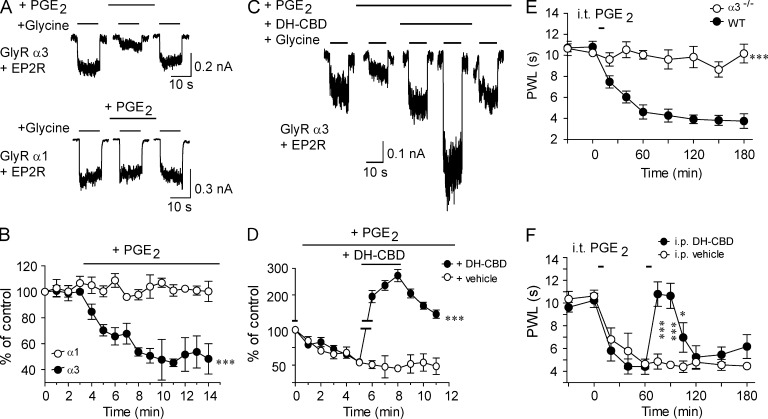Figure 4.
DH-CBD rescue of PGE2-induced inhibition of the α3 GlyRs and chronic pain. (A) Trace records of IGly in HEK 293 cells coexpressing EP2 receptors with either the α3 or α1 GlyRs before and after sustained PGE2 application. (B) Time courses of IGly in the cells coexpressing EP2 receptors with either the α3 (n = 6) or α1 (n = 5) GlyRs after sustained PGE2 application. ***, P < 0.001 (α1 vs. α3). (C) Trace records of IGly in cells coexpressing EP2 receptors with the α3 GlyRs without and with DH-CBD after sustained PGE2 application. (D) Time courses of DH-CBD potentiation of IGly in cells coexpressing the α3 GlyRs and EP2Rs after sustained PGE2 application (n = 6). ***, P < 0.001 as compared with vehicle application. (E) Time courses of PWL to thermal stimulation before, during, and after i.t. PGE2 injection in WT and α3−/− mice (n = 10). ***, P < 0.001, as compared with the WT mice. (F) The analgesic effect of 50 mg/kg DH-CBD i.p. (n = 10) on PWL to thermal stimulation after i.t. PGE2 injection. *, P < 0.05; ***, P < 0.001, as compared with i.p. vehicle (n = 10). Data are representative of two independent experiments and expressed as mean ± SEM.

